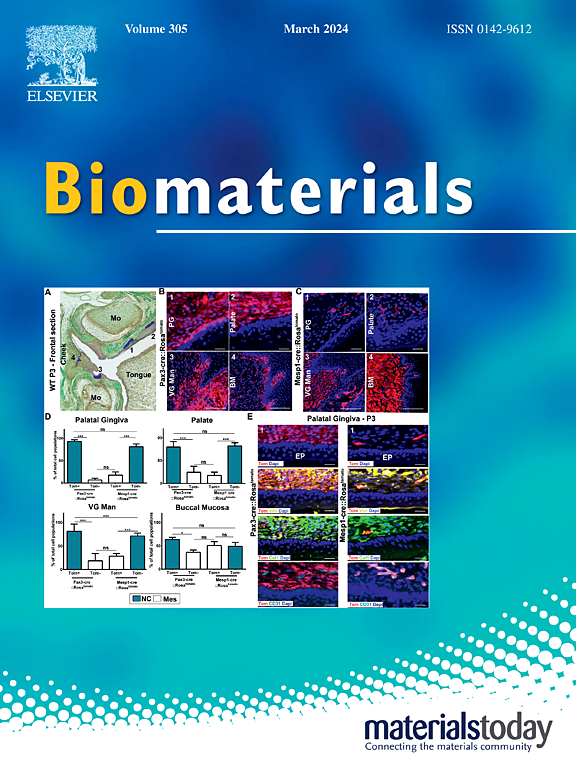Investigation of the biodegradation kinetics and associated mechanical properties of 3D-printed polycaprolactone during long-term preclinical testing
IF 12.8
1区 医学
Q1 ENGINEERING, BIOMEDICAL
引用次数: 0
Abstract
Polycaprolactone (PCL) is a bioresorbable polymer increasingly utilized for customized tissue reconstruction as it is readily 3D printed. A critical design requirement for PCL devices is determining the in vivo bioresorption rate and the resulting change in device mechanics suited for target tissue repair applications. The primary challenge with meeting this requirement involves accurate prediction of degradation in the target tissues. PCL undergoes bulk hydrolytic degradation following first order kinetics until an 80–90 % drop in the starting number average molecular weight (Mn) after 2–3 years in vivo. However, initial polymer architecture, composite incorporation, manufacturing modality, device architecture, and target tissue can impact degradation. In vitro models do not fully capture device degradation, and the limited long-term (2–3 year) models primarily utilize subcutaneous implants. In this study, we investigate the degradation rate of 3D-printed airway support devices (ASDs) comprised of PCL and 4 % hydroxyapatite (HA) when implanted on Yucatan porcine tracheas for two years.
After one year of degradation, we report a mass loss of less than 1 % and Mn reduction of 25 %. After two years, mass and Mn decreased by 10 % and 50 % respectively. These changes are accompanied by an increase in elastic modulus from 146.7 ± 5.2 MPa for freshly printed ASDs to 291.7 ± 16.0 MPa after one year and 362.5 ± 102.4 MPa after two years. Additionally, there was a decrease in yield strain, and increase in yield stress from implantation to 1-year (p < 0.001). Plastic strain completely diminished by two years, resulting in brittle failure at a yield stress of 12.5 MPa. The significantly lower rate of hydrolysis coupled with hydrolytic embrittlement indicates alternate degradation kinetics compared to subcutaneous models. Fitting a new model for degradation and predicting elastic and damage properties of this new degradation paradigm provide significant advancements for 3D-printed device design in clinical repair applications.

求助全文
约1分钟内获得全文
求助全文
来源期刊

Biomaterials
工程技术-材料科学:生物材料
CiteScore
26.00
自引率
2.90%
发文量
565
审稿时长
46 days
期刊介绍:
Biomaterials is an international journal covering the science and clinical application of biomaterials. A biomaterial is now defined as a substance that has been engineered to take a form which, alone or as part of a complex system, is used to direct, by control of interactions with components of living systems, the course of any therapeutic or diagnostic procedure. It is the aim of the journal to provide a peer-reviewed forum for the publication of original papers and authoritative review and opinion papers dealing with the most important issues facing the use of biomaterials in clinical practice. The scope of the journal covers the wide range of physical, biological and chemical sciences that underpin the design of biomaterials and the clinical disciplines in which they are used. These sciences include polymer synthesis and characterization, drug and gene vector design, the biology of the host response, immunology and toxicology and self assembly at the nanoscale. Clinical applications include the therapies of medical technology and regenerative medicine in all clinical disciplines, and diagnostic systems that reply on innovative contrast and sensing agents. The journal is relevant to areas such as cancer diagnosis and therapy, implantable devices, drug delivery systems, gene vectors, bionanotechnology and tissue engineering.
 求助内容:
求助内容: 应助结果提醒方式:
应助结果提醒方式:


